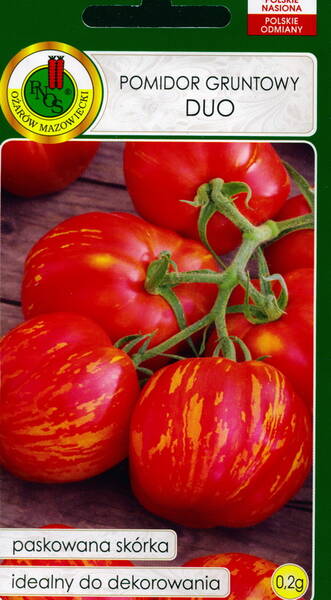This is a mid-early indeterminate variety. The fruits are small to medium large, with a diameter of around 4 cm. This variety has fruits with characteristic colouring, first green with light green stripes and later on red with yellow stripes. On one stalk there may be 20-25 fruits which can reach a weight of 1,0-1,2 kg.
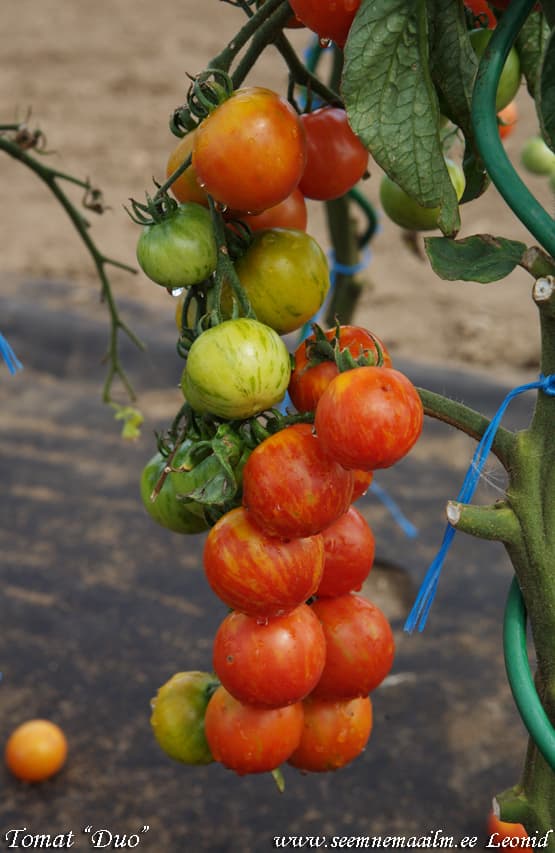
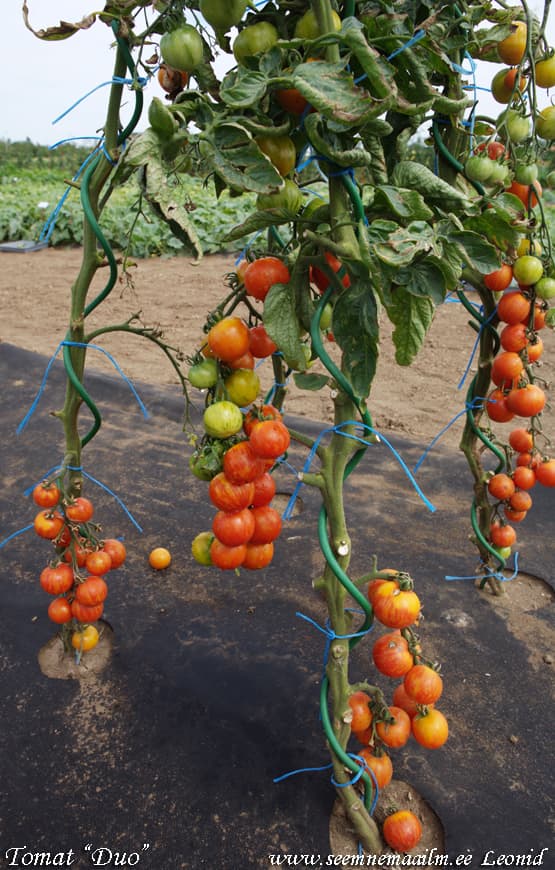
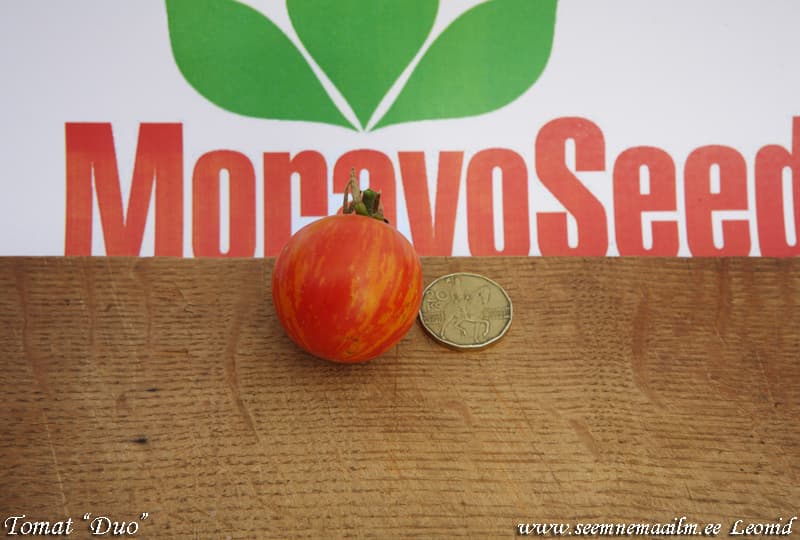
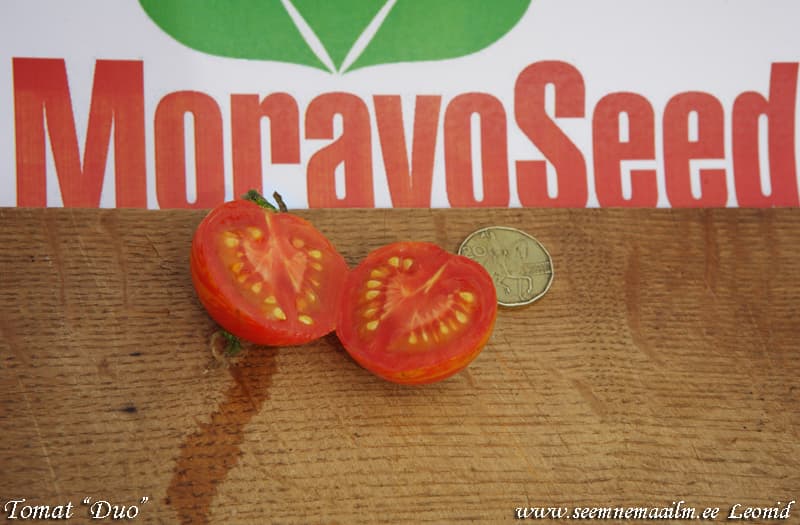
Lycopersicon esculentum.
* Many gardeners prefer to harvest seeds on their own. And such a decision, with the right approach, fully justifies itself.
We don't let tomatoes overripe.
For seeds, it is better to take fruits from the main stem and those that ripened on the bushes one of the first.
They should be ripe until slightly softened, but not overripe (otherwise, due to a decrease in the acidity of the juice, the seeds may begin to germinate already inside).
Selected tomatoes are cut lengthwise with a knife and, holding them over a glass or plastic jar with a wide neck, scrape the pulp out of them with a teaspoon.
Then the container is closed with a lid and placed in the sun for 3-5 days so that the seeds undergo the fermentation process in their own juice (if it is not enough, add a few drops of boiled water).
The container is shaken several times a day, and the contents are mixed. A sign of the end of fermentation is the appearance of a film and clarification of the juice. At the same time, fermented, full-weight seeds sink to the bottom, and frail and non-viable seeds float up.
Before throwing the contents of the container onto a strainer, the fermented mass is mixed well 3-4 times in order to precipitate the seeds that are still floating above with the pulp. If there is little liquid, you can add water. Next, let the mass settle, and then carefully drain the top layer (preferably through a strainer). The remaining seeds are washed well under the tap, after which they are laid out to dry on thick paper, periodically rubbing so that they do not stick together.
Store seeds of their own selection in paper bags at room conditions.






